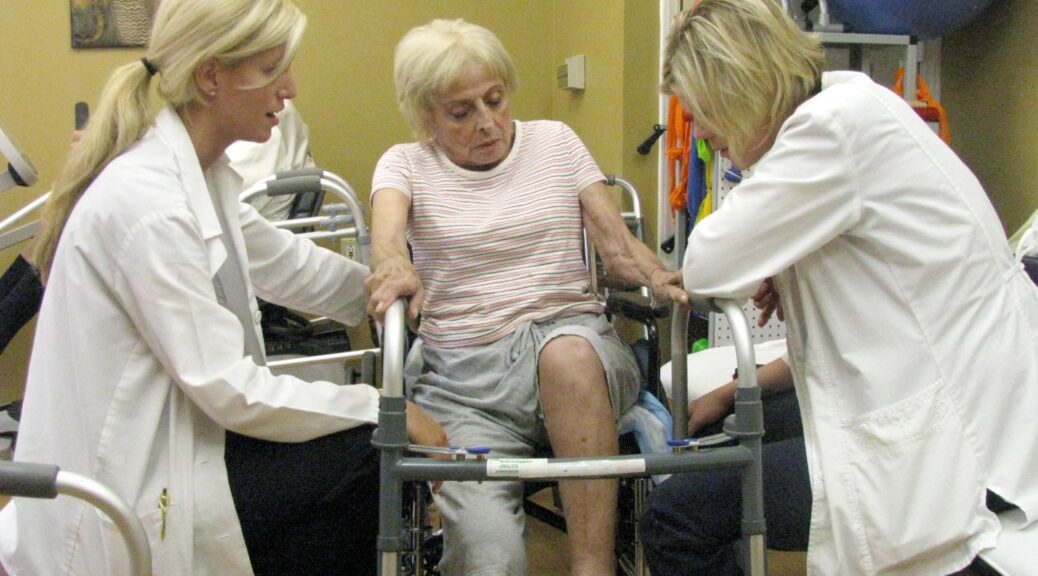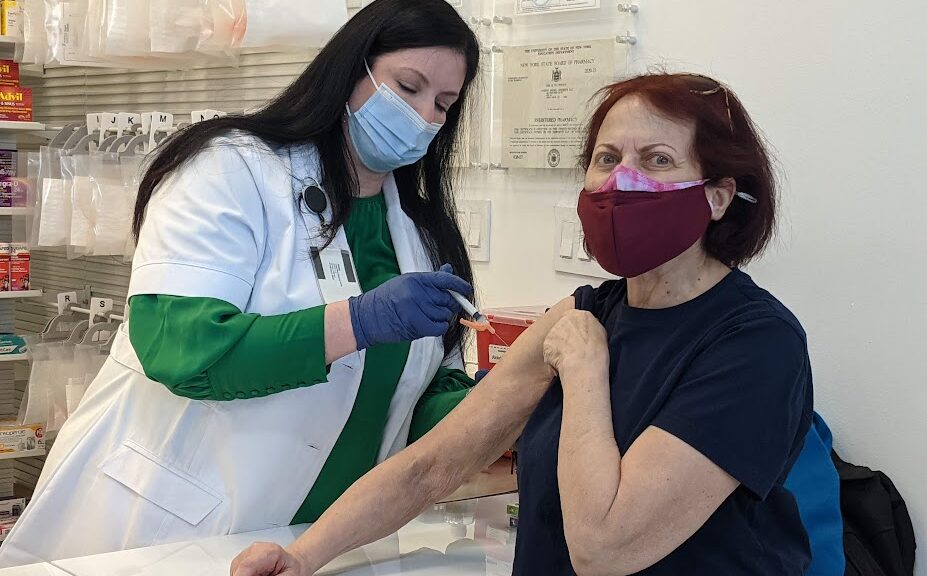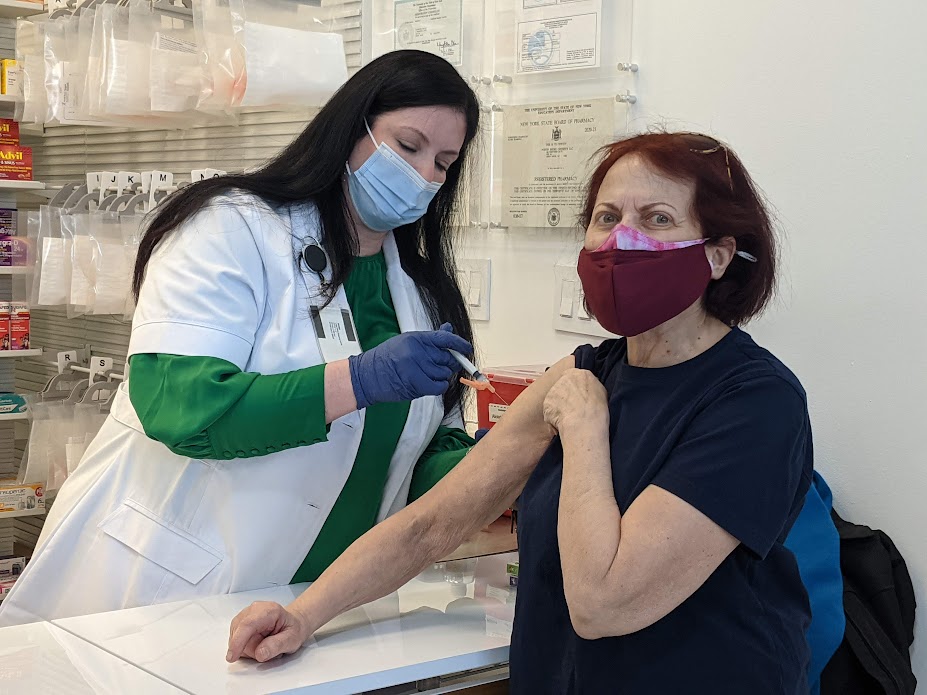While the dictator wannabe Donald Trump promises to tear up the Constitution, weaponize the judiciary, persecute political opponents, imprison the media and repeal the Affordable Care Act (Obamacare) – and monopolizing headlines doing it as he propagandizes over his 91 indictments – President Biden is working feverishly and accomplishing landmark programs to improve lives of Americans. Here is a fact sheet on the Biden-Harris Administration’s new actions to lower healthcare and prescription drug costs by promoting competition. – Karen Rubin/news-photos-features.com

President Biden believes that health care should be a right, not a privilege. For too long, corporate special interests and trickle-down economics have allowed Big Pharma to make record profits, while millions of Americans struggle to afford health care and prescription drugs to treat common and chronic conditions. As part of the President’s Bidenomics agenda, the Biden-Harris Administration is cracking down on price gouging and taking on special interests to lower costs for consumers and ensure every American has access to high-quality, affordable health care.
The Biden-Harris Administration is announcing new actions to promote competition in health care and support lowering prescription drug costs for American families, including the release of a proposed framework for agencies on the exercise of march-in rights on taxpayer-funded drugs and other inventions, which specifies that price can be a factor in considering whether a drug is accessible to the public. The Administration believes taxpayer-funded medications should be reasonably available and affordable. These actions build on the steps the Administration has already taken to lower health care costs, including capping the cost of insulin at $35 per product per month for seniors, finally allowing Medicare to negotiate lower prescription drug prices, requiring drug companies to pay rebates to Medicare if they raise prices faster than inflation, and locking in $800 per year in health insurance savings for 15 million Americans under President Biden’s Inflation Reduction Act.
Lowering Prescription Drug Costs
Currently the 25 largest pharmaceutical companies control around 70% of industry revenues. Other parts of the health care industry also face limited competition. Over 75% of Americans live in highly concentrated hospital markets, and just three or fewer issuers of individual health insurance control 80% of the market in 44 states. In addition, five insurers control over 70% of the Medicare Advantage market. This consolidation contributes to higher costs for taxpayers, lower wages for health care workers, and worse quality of care for patients.
New research released by the Department of Health and Human Services (HHS) finds that a lack of competition in drug markets is highly correlated with higher prices. Among the highest priced drugs (i.e., those in the top 10% of price per prescription), 89% of small molecule drugs and 100% of biological products had only one manufacturer. Meanwhile, nearly three in ten individuals struggle to pay for the drugs they need.
Today, the Biden-Harris Administration announced a new action to support lowering prescription drug costs and increase Americans’ access to life-saving medications:
- Promoting equitable access to lower-priced taxpayer-funded drugs. Taxpayers have spent hundreds of billions of dollars on research catalyzing the discovery and development of new prescription drugs. The Biden-Harris Administration believes taxpayer-funded drugs and other taxpayer-funded inventions should be available and affordable to the public. When an invention is made using taxpayer funds, under certain circumstances march-in authority under the Bayh-Dole Act enables the federal government to license the invention to another party. The prior Administration proposed a rule preventing the government from exercising this authority on the basis of high price alone. The Biden-Harris Administration decided not to finalize that proposal earlier this year, consistent with President Biden’s Executive Order on Promoting Competition in the American Economy. Today, the Department of Commerce (DOC) and HHS released a proposed framework for agencies on the exercise of march-in rights that specifies for the first time that price can be a factor in determining that a drug or other taxpayer-funded invention is not accessible to the public. DOC and HHS invite public input on how this framework can promote access to taxpayer-funded inventions, including treatments for patients, while promoting innovation.
Scrutinizing Anticompetitive Acquisitions and Anticompetitive Practices
Consolidation in health care markets has accelerated in recent decades, too often leading to higher costs, worse quality, and less access to care—particularly in rural areas. For example, a review of hospital merger studies finds that mergers in concentrated markets led to price increases often exceeding 20%. Consolidation has also led to a rapid decline in independent physician practices, with research finding that patients of hospital-owned practices pay nearly $300 more for similar care than at independent physician practices. At the same time, private-equity ownership in the health care industry has ballooned, with approximately $750 billion in deals between 2010 and 2020—in sectors including, but not limited to, physician practices, nursing homes, hospices, home care, autism treatment, and travel nursing. Too often, aggressive profiteering by private equity-owned practices can lead to higher patient costs and lower quality care.
Today, the Biden-Harris Administration announced new efforts to stop anticompetitive mergers and anticompetitive practices by dominant corporations in health care markets:
- Launching a cross-government public inquiry into corporate greed in health care. The Biden-Harris Administration believes that the health care system should serve patients, not corporate profiteers. The Administration is concerned that our health care system is increasingly being financialized, with corporate owners like private-equity firms and others maximizing their profits at the expense of patients’ health and safety, while increasing costs for patients and taxpayers alike. The Department of Justice (DOJ), the Federal Trade Commission (FTC), and HHS will issue a joint Request for Information to seek input about how private equity and other corporations’ increasing power and control of our health care is affecting Americans. The agencies will use this joint Request for Information to identify areas for future regulation and enforcement prioritization, and they will continue to work together on case referrals, reciprocal training programs, data-sharing, and further development of additional health care competition policy initiatives. As part of this effort, HHS will appoint a Chief Competition Officer and DOJ’s Antitrust Division and FTC will name Counsels for Health Care to lead these efforts.
- Identifying anticompetitive “roll ups” that currently evade antitrust review. Businesses, including private equity firms, health insurers, and health systems sometimes use a “roll up” strategy, in which a series of relatively small acquisitions can lead to the consolidation of a market and contribute to worse patient outcomes while increasing taxpayer costs. These serial acquisitions may violate the antitrust laws. However, each individual acquisition may fall below the size thresholds for reporting the prospective deal to the antitrust enforcement agencies before consummating the acquisition—making it more challenging for the enforcement agencies to identify anticompetitive transactions at the outset. Today, HHS, DOJ, and FTC announced that they will, to the maximum extent possible, engage in data sharing to help the antitrust enforcers identify potentially anticompetitive transactions that might otherwise evade ready review by antitrust enforcers.
- Increasing ownership transparency. HHS, through the Centers for Medicare & Medicaid Services (CMS), has taken unprecedented action to shed light on ownership trends in health care. The Biden-Harris Administration is the first to make ownership data on hospitals, nursing homes, hospice providers, and home health agencies publicly available, and today, CMS is releasing, for the first time, ownership data on Federal Qualified Health Centers and Rural Health Clinics on data.cms.gov. Making ownership information transparent allows for identification of common owners with histories of poor performance, analysis of trends on how market consolidation impacts consumers, and evaluation of the relationships between ownership and changes in health care costs and outcomes.
- Increasing Medicare Advantage transparency. Currently, about 50% of Medicare enrollment is in Medicare Advantage and the government is expected to spend over $7 trillion on Medicare Advantage over the next decade. The Biden-Harris Administration is committed to ensuring Medicare Advantage insurance plans best meet the needs of people with Medicare, there is timely access to care, and the market has healthy competition. To support this work, CMS must have comprehensive and high-quality Medicare Advantage programmatic data, including understanding the effects of market shifts on consumers and care outcomes. CMS has taken steps to improve Medicare Advantage data transparency and today, it is announcing a new phase of this work, which will start with soliciting information from the public early next year to strengthen CMS’ data capabilities and Medicare Advantage transparency efforts.
- Identifying anticompetitive “roll ups” that currently evade antitrust review. Businesses, including private equity firms, health insurers, and health systems sometimes use a “roll up” strategy, in which a series of relatively small acquisitions can lead to the consolidation of a market and contribute to worse patient outcomes while increasing taxpayer costs. These serial acquisitions may violate the antitrust laws. However, each individual acquisition may fall below the size thresholds for reporting the prospective deal to the antitrust enforcement agencies before consummating the acquisition—making it more challenging for the enforcement agencies to identify anticompetitive transactions at the outset. Today, HHS, DOJ, and FTC announced that they will, to the maximum extent possible, engage in data sharing to help the antitrust enforcers identify potentially anticompetitive transactions that might otherwise evade ready review by antitrust enforcers.
Building on Past Actions to Increase Health Care Competition and Lower Prescription Drug Costs
Today’s announcements build on steps the Administration has already taken to lower health care costs, increase competition, and improve the quality and availability of care across the health care industry. These include:
- Negotiating and lowering drug prices. Thanks to President Biden’s Inflation Reduction Act, the Administration has announced 10 prescription drugs for which Medicare will negotiate prices directly with participating manufacturers. These drugs cost people with Medicare $3.4 billion out of pocket in 2022. This builds on other progress to lower prescription drug costs. Individuals with Medicare can now receive certain vaccines for free under the President’s lower cost prescription drug law, which previously would have cost an average of $70 in out-of-pocket costs. The Inflation Reduction Act also capped the cost of insulin at $35 per product per month for almost four million seniors and others on Medicare with diabetes, which can lead to hundreds of dollars in savings for a month’s supply.
- Stopping Big Pharma tactics that raise prices for working families. In September, the FTC issued an enforcement policy statement explaining that Big Pharma companies may face legal action if they delay entry of generic competitors with improper patent listings in the Food and Drug Administration’s (FDA’s) publication “Approved Drug Products with Therapeutic Equivalence Evaluations,” commonly known as the “Orange Book.” When a brand pharmaceutical company improperly lists a patent in the Orange Book, it may lead to a 30-month statutory stay that blocks the approval of competing drug products, including lower-cost generic alternatives. Such improper listings may delay competition and raise prices for life-saving products like asthma inhalers. FTC and FDA are working to address such improper listings, with FTC announcing last month that it is using FDA’s regulatory Orange Book patent listing dispute process to challenge more than 100 patents listed for brand-name asthma inhalers, epinephrine autoinjectors, and other drug products.
- Cracking down on anticompetitive and anti-consumer practices in Medicare Advantage. Medicare Advantage—which serves over 30 million American seniors and people with disabilities—is increasingly dominated by just a few large national plans. Last month, HHS announced new steps to stop predatory marketing and steering of patients to Medicare Advantage plans that may not best meet their needs. HHS, through CMS, proposed a rule that would, if finalized as proposed, stop large insurance plans from offering brokers and agents lavish compensation—such as cash bonuses, volume bonuses, and perks—and working with marketing middlemen who are more likely to contract with larger insurers, leading to steerage of patients to plans based on compensation to the broker or agent, rather than based on the patients’ best interests. The agency also proposed new steps to ensure seniors and people with disabilities can actually access supplemental benefits like hearing and dental coverage that these large plans market and help drive up Medicare costs—so that they aren’t merely marketing ploys. In addition, CMS will continue to implement updates to Medicare Advantage payment that improve payment accuracy, address gaming, and recover overpayments. Addressing overpayment in Medicare Advantage will help to make the market more competitive between Medicare Advantage plans and create a more level playing field between Medicare Advantage and Traditional Medicare.
- Making hearing aids available over the counter. To lower the price of hearing aids and expand access, President Biden’s Executive Order on Promoting Competition in the American Economy called on the FDA to act promptly to make hearing aids available over the counter, without a prescription. That is now a reality. Under a final rule issued by the FDA, hearing aids are now on store shelves across the country—for thousands of dollars less than before. The rule is also spurring competition among providers, leading to new features and models.
- Cracking down on nursing homes that endanger resident safety. In recent years, there has been a disturbing trend towards private equity firms and other large corporate owners purchasing nursing homes and slashing levels of staff to maximize profits. The Biden-Harris Administration has taken numerous steps to crack down on nursing homes that put the well-being of their residents at risk, including proposing a rule that, if finalized as proposed, would establish a federal floor for safe staffing levels. In addition, last month CMS finalized a rule that will provide the public with more information about who owns a nursing home—including whether facilities are owned by a private equity company or a real estate investment trust—so that families can make more informed decisions about where to seek nursing home care for their loved ones.
- Reforming the organ transplant system. President Biden recently signed a bipartisan law, the Securing the U.S. Organ Procurement and Transplantation Network Act, to break up the monopoly that has controlled the organ transplant system for its entire nearly four decade history. HHS will harness competition with the intent to make multiple awards to different entities to benefit from best-in-class vendors and provide a more efficient system that strengthens oversight and improves patient safety.
- Addressing anticompetitive misuse of the patent system. The FDA and U.S. Patent and Trademark Office are working together on a robust set of initiatives aimed at protecting and promoting U.S. innovation while advancing marketplace competition that can lower drug prices and expand access.
- Banning non-compete agreements that trap health care workers and others. The FTC proposed a rule to ban employers from using non-compete clauses. The estimated 18% of workers covered by non-compete clauses include many across the health care industry such as doctors and nurses, who will have more employment opportunities if the rule is finalized.
- Promoting competition in eyeglasses. Bundling eye exams with the purchase of eyeglasses reduces competition in the market for eyeglasses—raising prices and reducing options for consumers. The FTC proposed an update to its Eyeglass Rule to make sure that eye doctors give patients their prescriptions immediately after their eye exam—facilitating consumers’ ability to choose where to get their eyeglass prescriptions filled.
- Developing new payment models for doctors including supporting independent doctors. Succeeding in value-based care can be challenging for small, independent physician practices. Beginning July 1, 2024, the CMS Innovation Center’s Making Care Primary Model will provide a pathway for primary care clinicians to gradually adopt prospective, population-based payments that support the delivery of advanced primary care.
- Stopping Big Pharma tactics that raise prices for working families. In September, the FTC issued an enforcement policy statement explaining that Big Pharma companies may face legal action if they delay entry of generic competitors with improper patent listings in the Food and Drug Administration’s (FDA’s) publication “Approved Drug Products with Therapeutic Equivalence Evaluations,” commonly known as the “Orange Book.” When a brand pharmaceutical company improperly lists a patent in the Orange Book, it may lead to a 30-month statutory stay that blocks the approval of competing drug products, including lower-cost generic alternatives. Such improper listings may delay competition and raise prices for life-saving products like asthma inhalers. FTC and FDA are working to address such improper listings, with FTC announcing last month that it is using FDA’s regulatory Orange Book patent listing dispute process to challenge more than 100 patents listed for brand-name asthma inhalers, epinephrine autoinjectors, and other drug products.
Improving transparency of hospital charges. CMS hospital price transparency regulations lay the foundation for a patient-driven health care system by making hospitals’ standard charges’ data available to the public. Last month, CMS strengthened these regulations to require hospitals to make charges available in a more standardized manner to streamline enforcement capabilities. This will help the public learn how much an insurance company pays for a particular hospital service, for third parties to develop consumer-friendly materials, for hospitals to comply, and for CMS to enforce the regulations.















